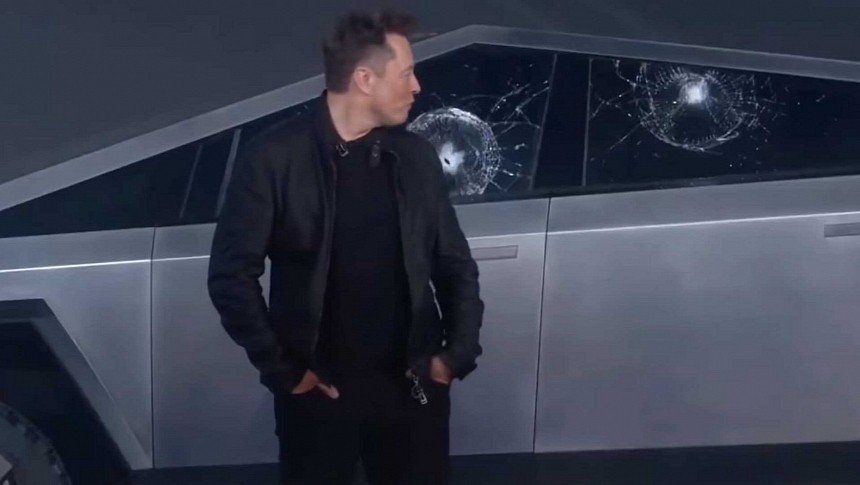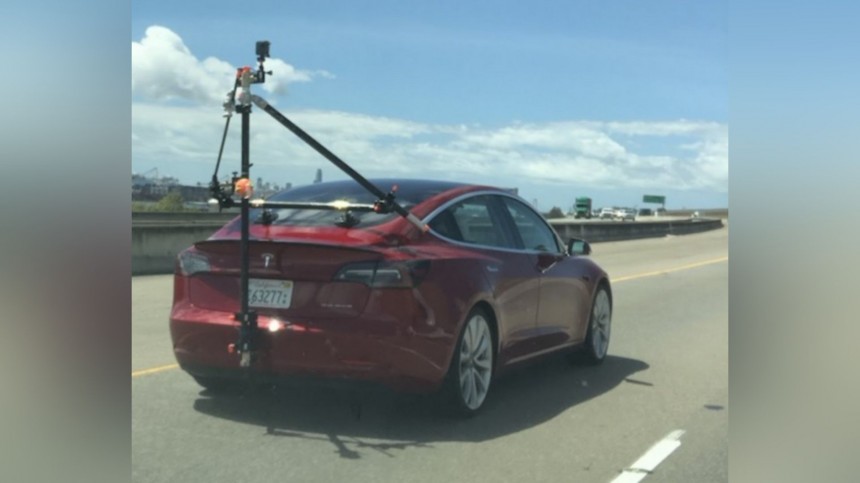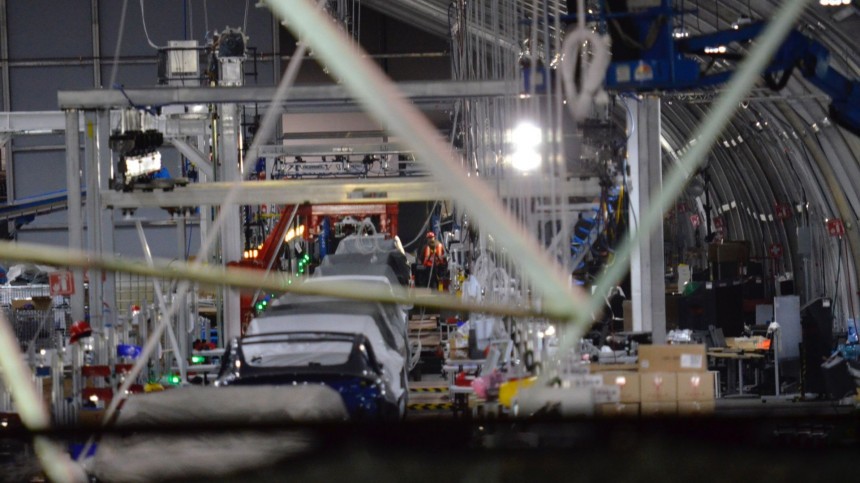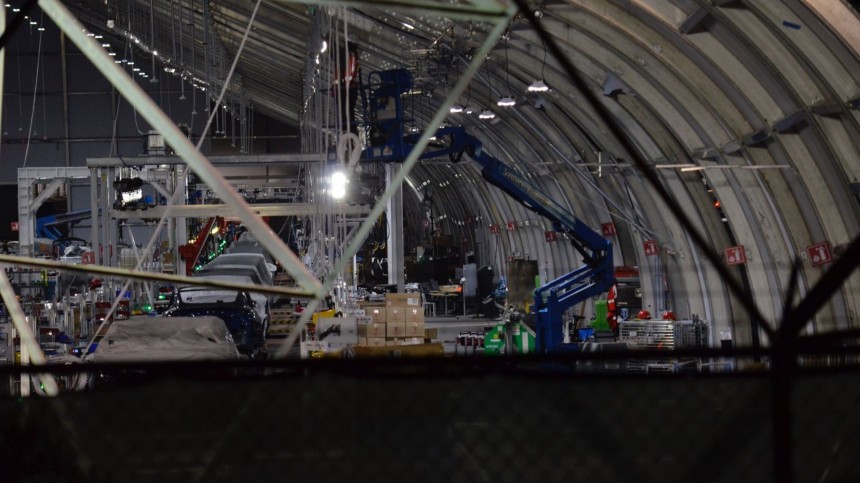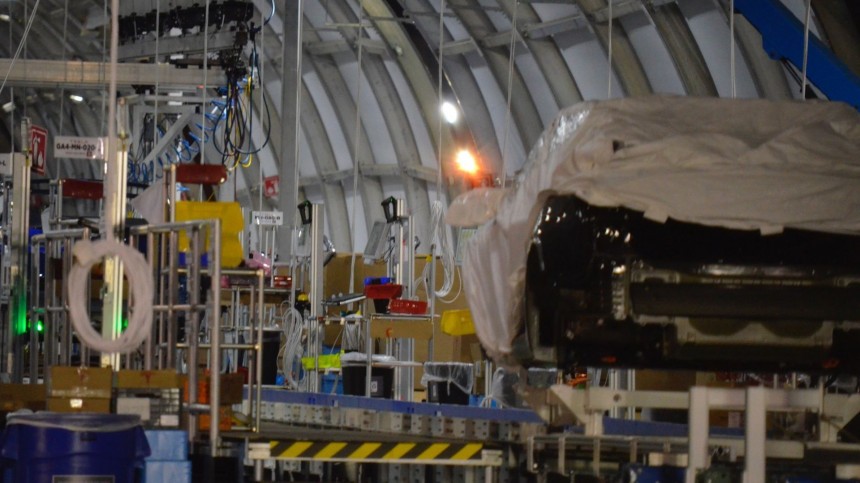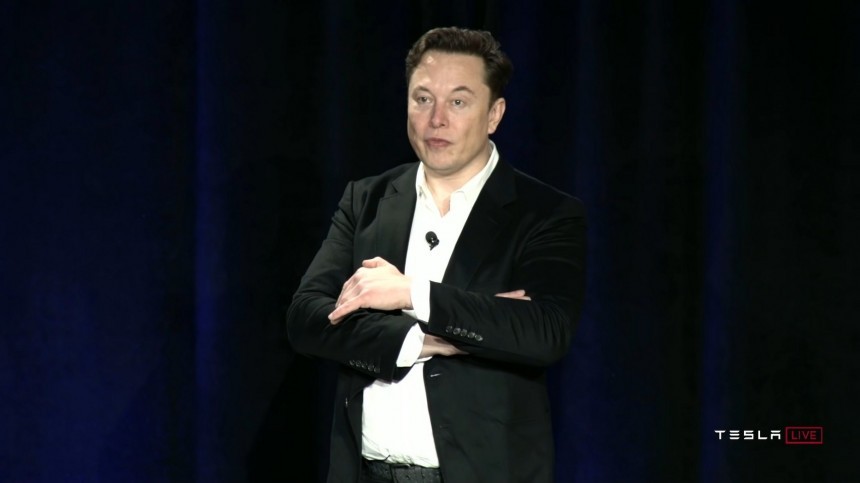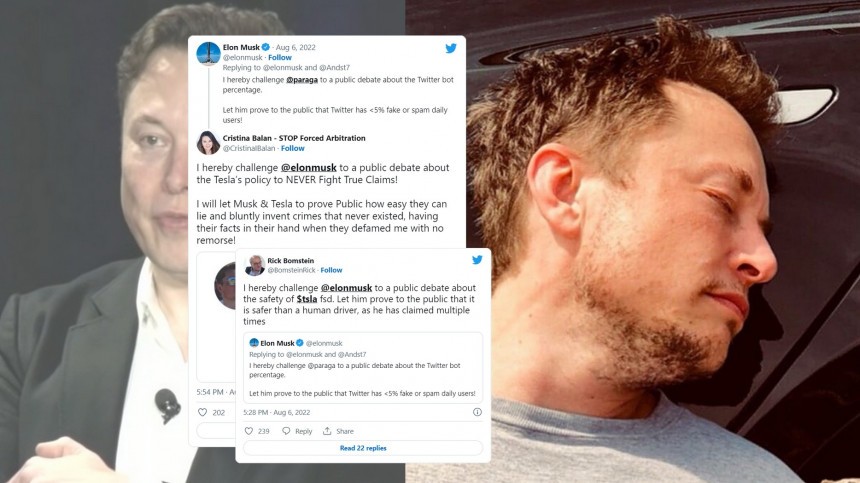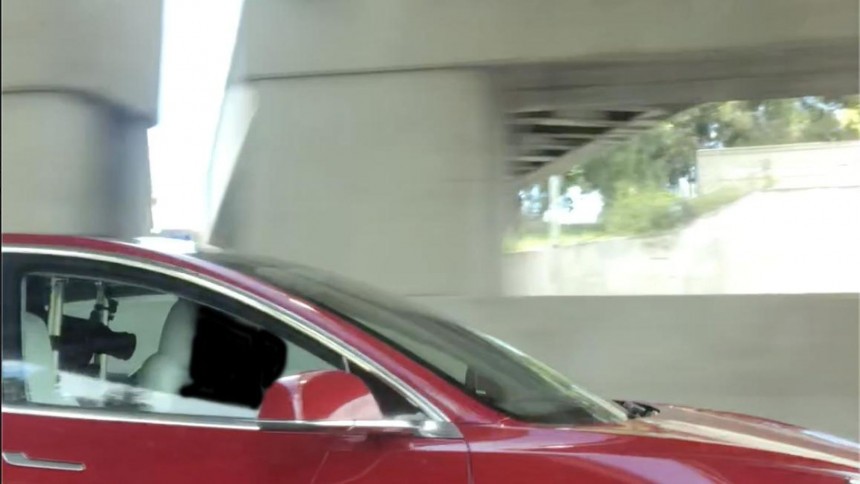Coherence is the quality of being logically consistent. In other words, to act as you preach. When The Los Angeles Times used a tweet Elon Musk shared on May 20, 2022, to interpret his actions in a defamation lawsuit, the story was called "biased and misleading." Curiously, not by Elon Musk himself, but by Tesla – which was not even involved in the case Randeep Hothi filed against its CEO.
In February 2019, Hothi parked his car in the Fremont factory parking lot, where the company has a showroom. The graduate student had been investigating Tesla and sharing his findings on Twitter, which led Musk to tell Tesla guards to kick him out of the company's premises whenever they saw him around. The public of the showroom can use the plant's parking lot, which was what Hothi argued he was doing when a guard told him to leave. As it did not work, the student got back to his vehicle and complied.
The guard was close to his car as he left and passed by him. Tesla took the surveillance video to the police and tried to sue Hothi for threatening its staff member. It heard back from the police and prosecutors it had no case against the student.
Hothi kept on investigating Tesla. He revealed the tents where the "alien dreadnaught" Musk conceived was actually building Model 3 units. On one occasion, Hothi saw a Tesla with cameras and took pictures of it. The BEV maker accused him of harassing its employees and got a temporary restraining order against him. When it tried to make it permanent, Hothi challenged the company to reveal what the cameras in its car showed. Tesla dropped the case.
In August 2019, Musk sent Aaron Greenspan an email message that said Hothi "almost killed Tesla employees. What was a sideswipe when Hothi hit one of our people could easily have been a death with 6 inches of difference." Greenspan runs PlaiSite, a website that publishes relevant legal documents – including several lawsuits that involve Musk and Tesla. He shared Musk's message on Twitter, and Hothi decided to sue the Tesla CEO for defamation. At the time, he said he would drop the case should Musk apologize, but the Tesla executive never did that.
Musk's lawyers used several defense strategies to dodge the defamation allegation – nothing related to deep fakes this time. In March, they proposed to settle the lawsuit by paying $10,000, and Hothi accepted it. The graduate student said he wanted to avoid the legal expenses and also to protect his sources at Tesla, which would probably have to reveal their identities should the lawsuit proceed.
Tesla does not have a press relations department anymore, and Elon Musk just talks to a few journalists. Russ Mitchell is not among them, but that did not stop The Los Angeles Times reporter from trying to hear the Tesla CEO about the story he was preparing on Hothi's case. Musk did not get in touch with him. When the newspaper shared his article on Twitter, it was not the Tesla CEO who tried to bash it: it was Tesla.
Although it was never involved with the lawsuit, the company tweeted that the story was "biased and misleading" because Hothi would have accepted a 998 offer under California law. That means that Musk evoked section 998 of the California Code of Civil Procedure to try to settle the lawsuit. This rule was created to stimulate deals and prevent California courts from being flooded with cases that could have been solved in a friendly manner. Mitchell preferred to frame it as "a tool that can be used by the fabulously rich to beat up on the little guy in court."
According to section 998, if a defendant evokes it to propose a deal and the compensation to the plaintiff is lower than the amount offered to settle the dispute, the plaintiff cannot recover the costs they had with the lawsuit and has to pay for the legal expenses the defendant had (excluding attorney fees) until they proposed to settle. If the plaintiff offers a 998 deal and the defendant wins, they cannot recover the legal expenses they had and may still have to pay for the ones the plaintiff had. In other words, it makes the life of anyone refusing to accept a settlement a lot harder – even if they win.
Tesla still wrote in its tweet that Hothi "could have been on the hook for significant legal costs when he eventually lost." It also stated that "the offer expressly denied any liability by Mr. Musk" and that it "was an admission of defeat by Mr. Hothi and his lawyers, not a victory." Some users joked that it was Musk writing after forgetting to change the handle. Twitter now also puts a disclaimer under The Los Angeles Times tweet stating that "readers added context they thought people might want to know." These "readers" used Tesla's tweet to say the article is misleading. Elon Musk owns Twitter.
Lawrence Fossi, who worked as one of Hothi's attorneys in the case, created a thread on Twitter to talk about that. He is more popularly known there as "Montana Skeptic." Hothi's lawyer focused on at least four crucial points in Tesla's tweet defending Musk.
First, Fossi asked where Tesla's Board of Directors was to allow him to make "personal use" of the company's Twitter account to defend him. He also accused Musk of drafting some of the attorneys Tesla hired "to join the outside counsel defending Randeep's defamation suit." He then asked: "Who would wager that the Tesla Board knew? Or, if they knew, would have lifted a finger to stop it?"
Second, Hothi's attorney said that the crucial point was to determine if his client harassed or almost killed Tesla employees as Musk said he did. Fossi accused the Tesla CEO's attorneys of trying to shift the focus to other aspects, not the accusation Musk made in his email message to Greenspan – which the Tesla executive sued for doing that. PlainSite tweeted that the lawsuit was dropped after Hothi agreed to settle.
Third, Fossi corrected Tesla by saying his client did not have to lose to face severe financial burdens. If Hothi won and received lower compensation than Musk's legal expenses at the moment of the deal offer, he would already go broke. Hothi must have taken that all into consideration for accepting the deal.
Fourth, Tesla argued that the acceptance "was an admission of defeat by Mr. Hothi and his lawyers, not a victory." Fossi said that his client was actually capable of doing something that Musk never would: putting aside his ego. Fighting the world's richest man and his team of lawyers, especially after Musk made the 998 offer, could represent a massive liability.
Despite what Tesla and Fossi tweeted, sticking to what Musk first wrote on July 31, 2021, and reaffirmed on May 20, 2022, is crucial here. The first time the CEO said Tesla would rather lose than "fight true claims" was when the company capped the cell voltage in thousands of Model S and Model X units. These owners sued Tesla, and Musk commented reaching a deal with them with those words. Curiously, he decided Tesla should not dispute the customers' claims two years after they filed the lawsuit – when it was about to be judged. More than proposing to settle, Musk also said: "If we are wrong, we are wrong. In this case, we were."
In Hothi's case, the Tesla CEO's lawyers made the 998 offer, not the plaintiff's. There are only two possible interpretations for that: either Musk considered it a "just case," which allowed him to propose a deal, or his legal strategies commitment is useless. After all, Musk also said he would "never surrender/settle an unjust case" against him and his company, even if they would probably lose. I repeat: never. Coherence does not admit nuances: either you have it or you don't.
The guard was close to his car as he left and passed by him. Tesla took the surveillance video to the police and tried to sue Hothi for threatening its staff member. It heard back from the police and prosecutors it had no case against the student.
In August 2019, Musk sent Aaron Greenspan an email message that said Hothi "almost killed Tesla employees. What was a sideswipe when Hothi hit one of our people could easily have been a death with 6 inches of difference." Greenspan runs PlaiSite, a website that publishes relevant legal documents – including several lawsuits that involve Musk and Tesla. He shared Musk's message on Twitter, and Hothi decided to sue the Tesla CEO for defamation. At the time, he said he would drop the case should Musk apologize, but the Tesla executive never did that.
Tesla does not have a press relations department anymore, and Elon Musk just talks to a few journalists. Russ Mitchell is not among them, but that did not stop The Los Angeles Times reporter from trying to hear the Tesla CEO about the story he was preparing on Hothi's case. Musk did not get in touch with him. When the newspaper shared his article on Twitter, it was not the Tesla CEO who tried to bash it: it was Tesla.
According to section 998, if a defendant evokes it to propose a deal and the compensation to the plaintiff is lower than the amount offered to settle the dispute, the plaintiff cannot recover the costs they had with the lawsuit and has to pay for the legal expenses the defendant had (excluding attorney fees) until they proposed to settle. If the plaintiff offers a 998 deal and the defendant wins, they cannot recover the legal expenses they had and may still have to pay for the ones the plaintiff had. In other words, it makes the life of anyone refusing to accept a settlement a lot harder – even if they win.
Lawrence Fossi, who worked as one of Hothi's attorneys in the case, created a thread on Twitter to talk about that. He is more popularly known there as "Montana Skeptic." Hothi's lawyer focused on at least four crucial points in Tesla's tweet defending Musk.
Second, Hothi's attorney said that the crucial point was to determine if his client harassed or almost killed Tesla employees as Musk said he did. Fossi accused the Tesla CEO's attorneys of trying to shift the focus to other aspects, not the accusation Musk made in his email message to Greenspan – which the Tesla executive sued for doing that. PlainSite tweeted that the lawsuit was dropped after Hothi agreed to settle.
Fourth, Tesla argued that the acceptance "was an admission of defeat by Mr. Hothi and his lawyers, not a victory." Fossi said that his client was actually capable of doing something that Musk never would: putting aside his ego. Fighting the world's richest man and his team of lawyers, especially after Musk made the 998 offer, could represent a massive liability.
In Hothi's case, the Tesla CEO's lawyers made the 998 offer, not the plaintiff's. There are only two possible interpretations for that: either Musk considered it a "just case," which allowed him to propose a deal, or his legal strategies commitment is useless. After all, Musk also said he would "never surrender/settle an unjust case" against him and his company, even if they would probably lose. I repeat: never. Coherence does not admit nuances: either you have it or you don't.
My commitment:
— Elon Musk (@elonmusk) May 20, 2022
- We will never seek victory in a just case against us, even if we will probably win.
- We will never surrender/settle an unjust case against us, even if we will probably lose.
This article is biased and misleading. Mr. Hothi accepted a “998” offer under California law. These offers are used to shift the cost of litigation to the losing party. If Mr. Hothi had not accepted it, he could have been on the hook for significant legal costs when he eventually…
— Tesla (@Tesla) May 1, 2023
